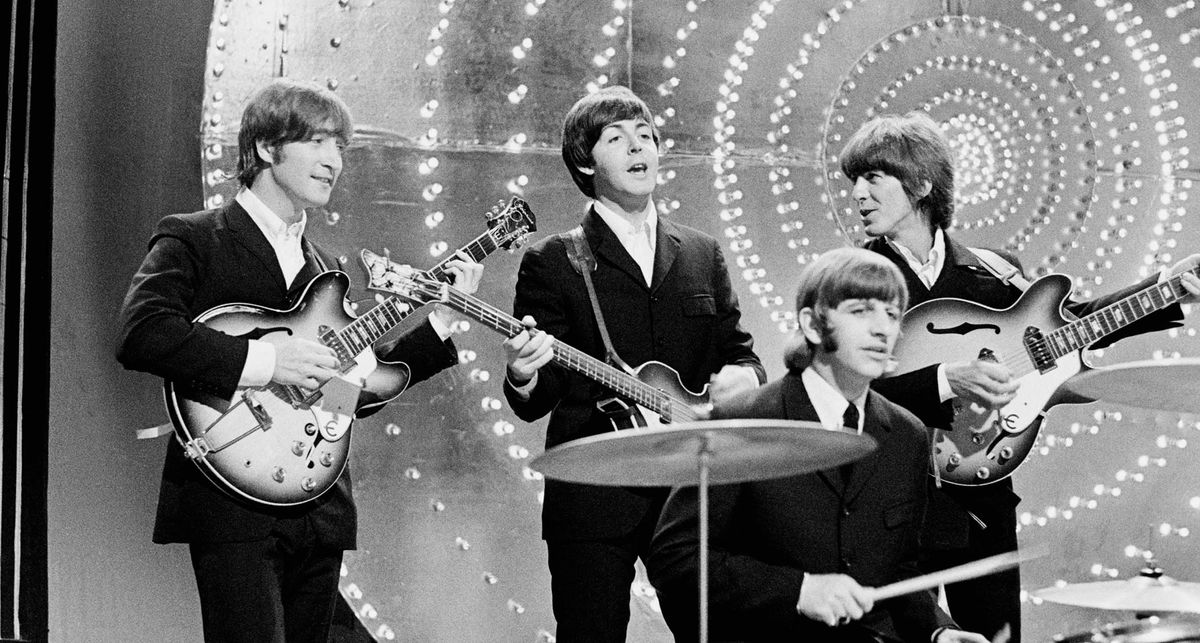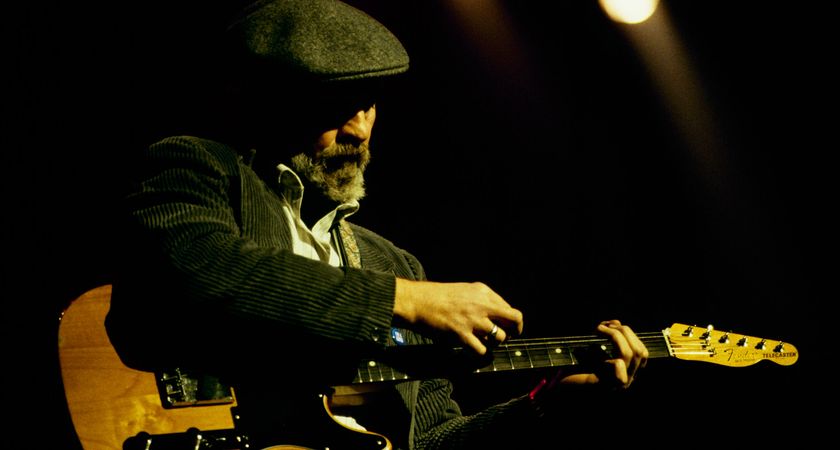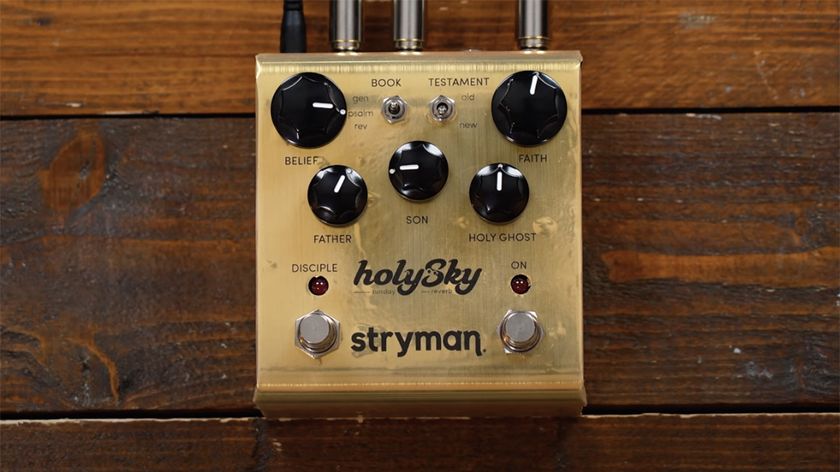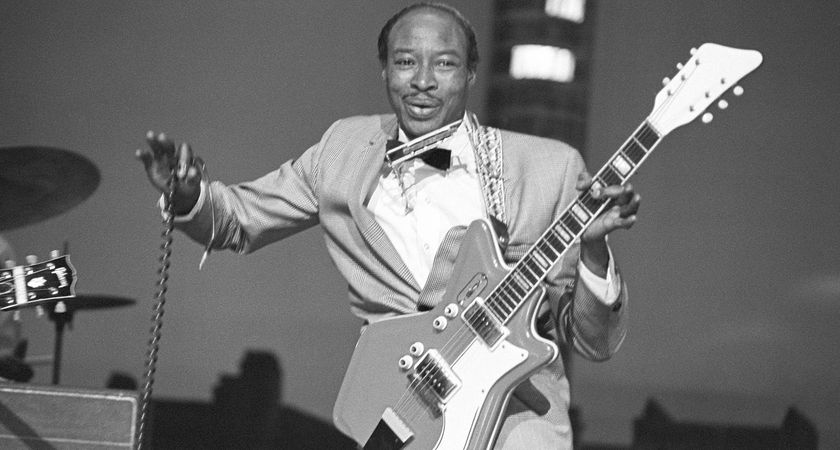The Beatles were pop trailblazers and studio experimentalists, but the Fab Four also had a heavier side – and it laid the groundwork for the rock revolution that followed
This lesson takes you into the three guitar styles of John Lennon, George Harrison and Paul McCartney, from electric 12-string work to slide solos

The aim of this lesson is to learn and apply some of the concepts behind the rockier side of the three guitar-playing Beatles. With a body of work as iconic and influential as theirs, studying and learning from their approach can benefit your own musicianship no end.
The Beatles were rockers first and foremost, with influences like Chuck Berry, Buddy Holly, Scotty Moore and Carl Perkins. Blues and R&B were also key elements for their music, and that melting pot led to them crafting one of the heaviest songs before Black Sabbath.
All three guitarists in The Beatles (John, George and Paul) went onto become fine players and their individual musicianship is often overshadowed by the sheer enormity of the group’s success.
Paul, although nominally the bass player due to nobody else wanting the role, was a guitarist at heart and played some of the band’s best solos, such as Taxman (Revolver) and Good Morning (Sgt. Pepper). John was famed for his electric and acoustic rhythm work, but his lead style took centre stage on tracks like Get Back, Yer Blues, and The End jam.
George’s official role in the band was as lead guitarist, contributing memorable solos on songs like his own Something, plus All My Loving and Happiness Is A Warm Gun.
As a vehicle for our studies, we have recorded five contrasting performance tracks complete with full tablature. These are all in guitar-friendly keys, and the chord progressions are moveable to any key once you have them under your fingers.
Our first track is inspired by John and George’s rhythm guitar work on songs like Paperback Writer and I Saw Her Standing There.
Example 2 takes a look at Paul’s lead style on numbers such as Taxman, and also draws inspiration from classics like Drive My Car and I Saw Her Standing There, with example 3 nodding to John and George’s rhythmic interplay on Come Together and I Want You (She’s So Heavy).
Our fourth example examines Paul’s lead work on tracks like Sgt. Pepper’s Lonely Hearts Club Band, and his and George’s slide guitar on Drive My Car and Run For Your Life. In fact all three of The Beatles’ guitarists recorded slide guitar parts at one time or another, and George more or less made a career out of it, post Beatles.
Our final example takes its influence from George’s Rickenbacker electric 12-string guitar work on early tunes like I Call Your Name, and John’s notable riff playing on songs like I Feel Fine. The combination of catchy riffs and rhythmic chord stabs is very much a Beatles trademark and provides the backbone for these examples.
Once you have played through the mini pieces and been through the jam tracks, why not try composing your own songs using some of your favourite Beatles techniques. Have fun with your ticket to rock!
Get the tone
Amp Settings: Gain 4, Bass 7, Middle 9, Treble 8, Reverb 3
The Beatles were there at the dawn of overdrive and fuzz pedals, so a bit of fuzz will help to coax those iconic lead tones. The basic sound is a clean guitar amp turned up loud but it’s worth boosting the highs for a bit of extra bite. For the electric 12-string tones we used a James Tyler Variax guitar. If you don’t have access to either, experiment with a bit of light chorus or phaser pedal.
Example 1. John & George’s rhythm style
Our first track, inspired by John and George’s rhythm on Paperback Writer and I Saw Her Standing There, starts with a single-note riff punctuated with D7 chord stabs. The combination of riffs and stabs is a Beatles trademark.
The A7 chord shifts up a minor 3rd to C7 then the D7 moves up a minor 3rd to F7. Classic Beatles fare. The D7#9 is particularly effective for chord stabs. The track finishes with some signature ascending chords played in a quarter-note triplet rhythm.
Example 2. Paul’s lead style
Our second track is inspired by Paul’s lead work on songs like Taxman, and also draws inspiration from classic rockers like Drive My Car and I Saw Her Standing There. As no single scale will fit over these chords it is easier to establish a motif that can be moved around to follow the chord changes.
To keep the interest up the basic motif can be changed and developed each time it’s moved, in a structural question and answer fashion. It’s an approach The Beatles used a lot.
Track 3. John & George’s rhythm style – Part 2
This looks at John and George’s rhythm work on tracks like Come Together and I Want You (She’s So Heavy). The tempo is a little more relaxed and we again use the tried and tested idea of alternating riffs and chord stabs.
The C7 and D7 chord stabs are played slightly short by lifting the fretting pressure off just after the chords are strummed. This was the band’s default method for filling out the rhythm track, right from the early days when one guitar would be an acoustic.
Track 4. Paul & George’s slide style
This looks at Paul’s lead work on tracks like Sgt. Pepper’s Lonely Hearts Club Band, and Paul and George’s slide work on Drive My Car and Run For Your Life. We’d recommended wearing the slide on the fourth finger of your fretting hand. This way it’s possible to move between playing the lead fills and slide licks.
A biting overdrive tone works best here, so select the bridge pickup and dig in hard with your pick.
Example 5. George’s 12-string style
Our final piece takes influence from George’s electric 12-string guitar work on tracks like I Call Your Name, and John’s riff work on hits such as I Feel Fine. The idea is to establish a catchy riff and then move it around to fit the chord changes.
The 12-string electric guitar helps to create an authentic vibe, but it’s not essential for you. This type of jangly riffing would become highly influential in the indie guitar world later on with bands like The Smiths using it often.
Get The Pick Newsletter
All the latest guitar news, interviews, lessons, reviews, deals and more, direct to your inbox!
Jon Bishop is a UK-based guitarist and freelance musician, and a longtime contributor to Guitar Techniques and Total Guitar. He's a graduate of the Academy of Contemporary Music in Guildford and is touring and recording guitarist for British rock 'n' roll royalty Shakin’ Stevens.







![Joe Bonamassa [left] wears a deep blue suit and polka-dotted shirt and plays his green refin Strat; the late Irish blues legend Rory Gallagher [right] screams and inflicts some punishment on his heavily worn number one Stratocaster.](https://cdn.mos.cms.futurecdn.net/cw28h7UBcTVfTLs7p7eiLe-840-80.jpg)






